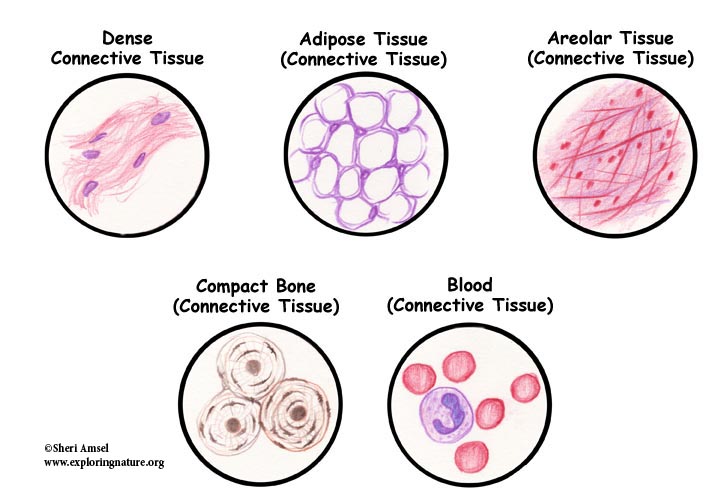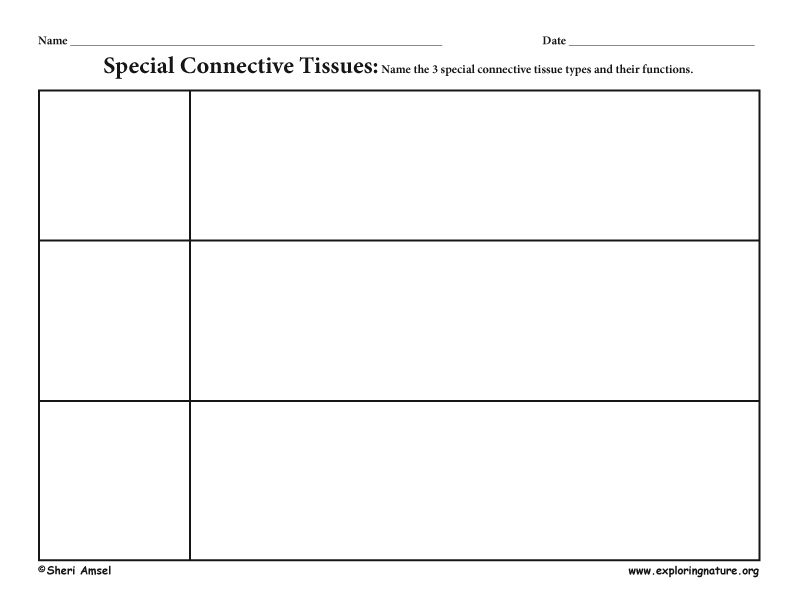

Tissues are groups of cells with a common structure (form) and function (job). There are four main tissues in the body – epithelium, muscle, connective tissue and nervous tissue.
Connective Tissue Functions (jobs):
The 3 Structural Elements of Connective Tissue:
1) Ground substance – gel around cells and fibers
2) Fibers – provide strength, elasticity and support
3) Cells
The Special Connective Tissues
1) Cartilage
Cartilage Functions (jobs):
2) Bone
Bone Functions (jobs):
3) Blood
Blood Functions (jobs):
When you research information you must cite the reference. Citing for websites is different from citing from books, magazines and periodicals. The style of citing shown here is from the MLA Style Citations (Modern Language Association).
When citing a WEBSITE the general format is as follows.
Author Last Name, First Name(s). "Title: Subtitle of Part of Web Page, if appropriate." Title: Subtitle: Section of Page if appropriate. Sponsoring/Publishing Agency, If Given. Additional significant descriptive information. Date of Electronic Publication or other Date, such as Last Updated. Day Month Year of access < URL >.
Amsel, Sheri. "Connective Tissue" Exploring Nature Educational Resource ©2005-2025. March 31, 2025
< http://www.exploringnature.org/db/view/Connective-Tissue >

